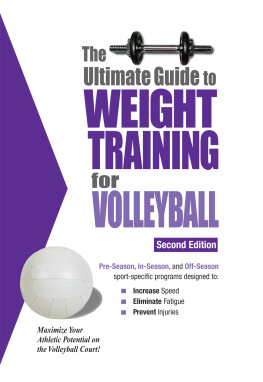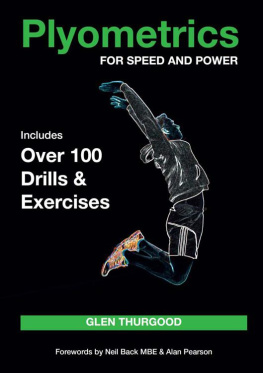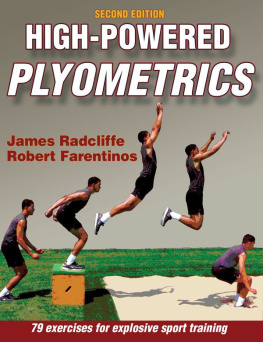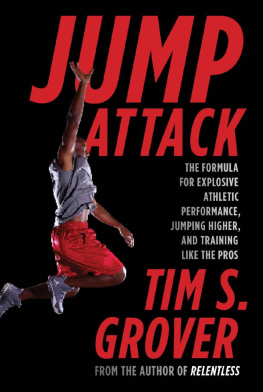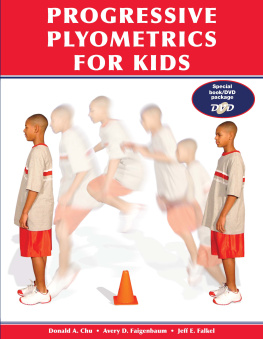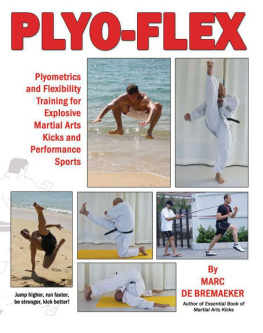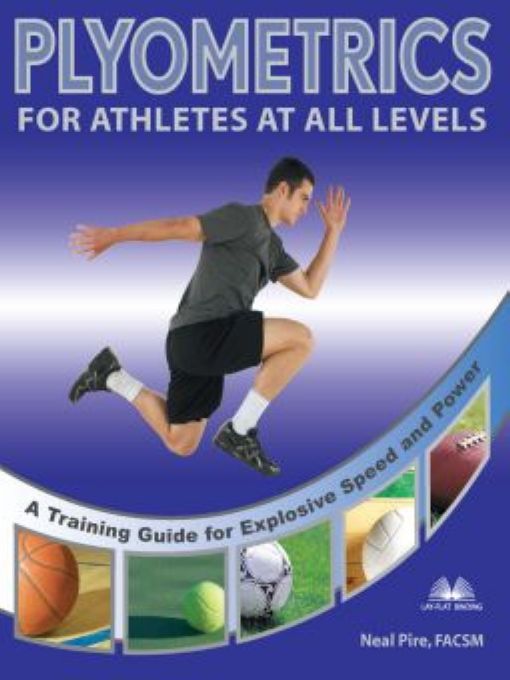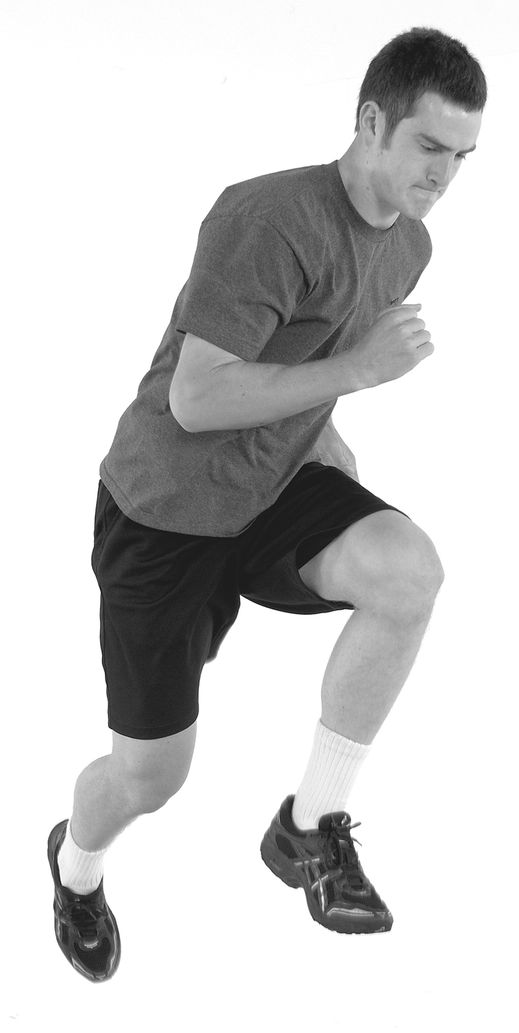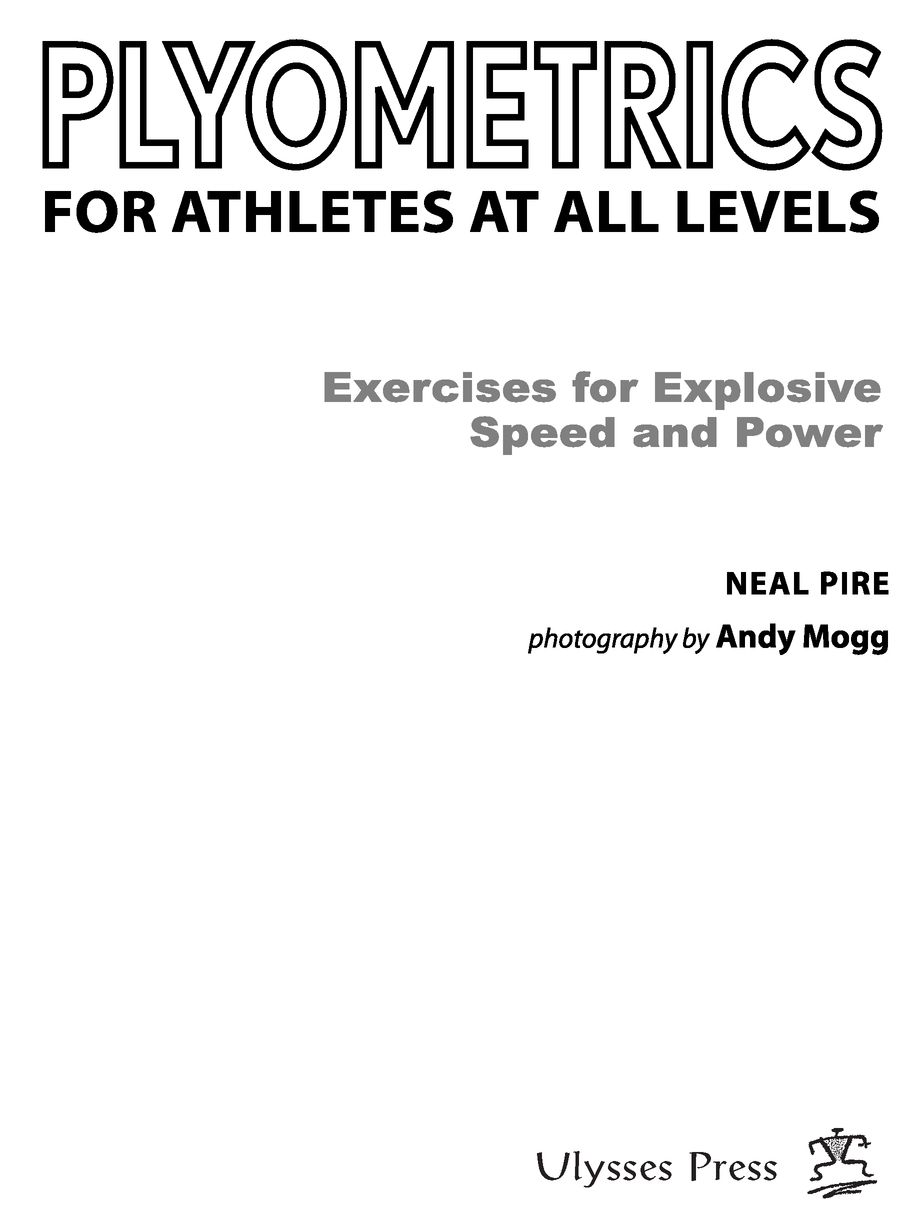Table of Contents
Please Note
This book has been written and published strictly for informational purposes, and in no way should be used as a substitute for consultation with health care professionals. You should not consider educational material herein to be the practice of medicine or to replace consultation with a physician or other medical practitioner. The author and publisher are providing you with information in this work so that you can have the knowledge and can choose, at your own risk, to act on that knowledge. The author and publisher also urge all readers to be aware of their health status and to consult health care professionals before beginning any health program.
part one:
jumping out of the fire
plyometrics: an overview
Plyometrics has quickly become one of the most popular sports-training methods on the planet. Research has shown it to be an effective way to use your bodys own anatomical and physiological systems to improve athletic performance.
In an age when shaving a tenth of a second off your 40 can be the deciding factor in getting an athletic scholarship to a Division I school or corporate firm partnership is based on your success on the golf course, its imperative that you do everything you can do to take your performance to a higher level and get noticed.
Plyometrics for Athletes at All Levels is your guide to implementing this cutting-edge training method. Run faster, jump higher and be as quick as you want to be. Whether youre a recreational soccer player or a masters-level weekend warrior, let plyometrics be your tool for success.
In simplest terms, plyometrics are exercises that involve a jumping, leaping or hopping movement. To understand how plyometrics works, lets take a close look at how your body operates. Muscles and tendons are similar to rubber bands. When you stretch a rubber band, you store elastic energy so that when you release one end of the rubber band, it suddenly and rapidly contracts back to its normal shorter length. But can elastic energy actually produce greater force than an active muscular contraction?
Take your hand and place it flat on a table or desk. Keeping your hand flat and still, raise only your middle finger up off the table and purposefully slam it down onto the table. Do it a couple of times, gauging the force with which you are tapping the table with your finger. Then, keeping the rest of your hand flat on the table, use your opposite hand to quickly pull the same middle finger up off the table and allow it to snap back down onto the table. Do it a couple of times, assessing the force of the finger slapping down onto the table. You can clearly see that the stretching back of the finger results in greater force generation than simply lifting and actively contracting the finger.
Plyometric activities enable a muscle to reach maximal force in the shortest amount of time. They promote quick, powerful movements using a pre-stretch, or counter movement, involving something known as stretch-shortening cycle, which is discussed below. By using a combination of stored elastic energy in the muscles and tendons as well as the stretch reflex, plyometric exercises increase the power of subsequent movements.
Natural Reflexes
Your nervous and muscular systems work together to generate additional force. We have all experienced going to the doctor for a physical and having our reflexes checked. The doctor typically uses a rubber mallet to tap the patellar ligament in the middle of our knee and, in response, our foot naturally kicks forward. This is known as the myotatic, or stretch, reflex. The tapping of the ligament actually stretches the patello-femoral tendon and the quadriceps muscle.
The quadriceps, like other skeletal muscles, are made up of special muscle fibersextrafusal and intrafusal muscle fibers. The intrafusal fibers have a very specialized purpose. These unique fibers contain what are known as muscle spindles, which have spiral-shaped nerve endings that sense the degree of stretch of that muscle fiber, as well as the rate of stretch, or how fast that fiber is stretching. This is crucial because the muscle spindles respond to the stretching, or lengthening, of the muscle by signaling to your spinal cord that the muscle is being stretched. In milliseconds, a signal returns to the muscle, telling the extrafusal fibers to autonomously contract, preventing or decelerating further stretching. Consider these mechanisms a safety valve, sensing excessive or perhaps dangerous stretching of the muscle and almost instantaneously preventing further stretching from occurring.
So now we see that there is force resulting from elastic energy, as well as an unconscious contraction in a muscle as a result from stretching that muscle. What happens if we also consciously contract the muscle upon being stretched? Lets go back to our example of your middle finger. Place the same hand back down flat on the table. Try quickly pulling the same middle finger up off the tablejust as you stretch the finger back, purposefully contract the flexors of the finger to slam it down onto the table. This is what happens during a plyometric activity. It is the perfect preparation and coordination of all these tools that will result in maximal force application.
Stretch-shortening Cycle
Lets now go back to the stretch-shortening cycle. The stretch-shortening cycle is simply the process that a muscle goes through as it stretches and then contracts during these types of movement. There are different phases of the stretch-shortening cycle. The first phase is the eccentric phase, when the muscle stretches or lengthens, thus storing elastic energy and stimulating the muscle spindles. The second phase is called the amortization phase; during this phase, signals are sent to the spinal cord and then via motor neurons back towards the extrafusal fibers. The third phase is the concentric phase, when the muscle actually responds to the previous two phases. It is during the concentric phase that the energy stored in the muscle retracts, increasing the force production. This phenomenon is coupled with the reflexive muscle action resulting from the stretch reflex. When you add your conscious explosive contraction, the end result is significantly greater force application than would have resulted from simply contracting the muscle.
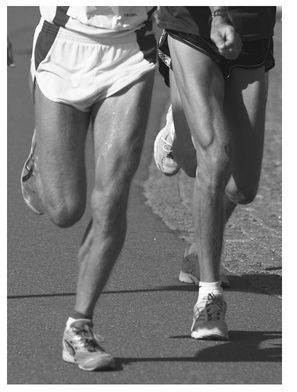
Consider a wildlife program youve seen that showed a herd of zebras grazing in the grasslands of Africa. When a lion came shooting out of the tall grass, hoping to catch its next meal, the initial reaction of the zebras was to bend down quickly and only slightly before exploding away from the lion and running for their lives. This is a demonstration of the stretch-shortening cycle. The quick stretch as the zebras lowered their center of gravity (eccentrically loading their muscles) set them up to dash away from the lion (concentric phase).


